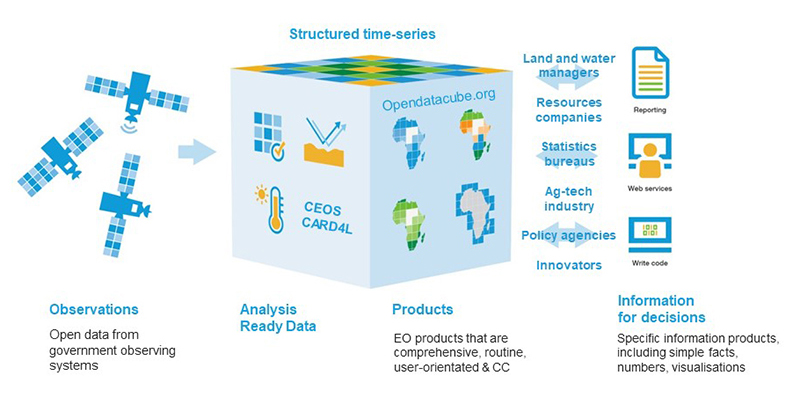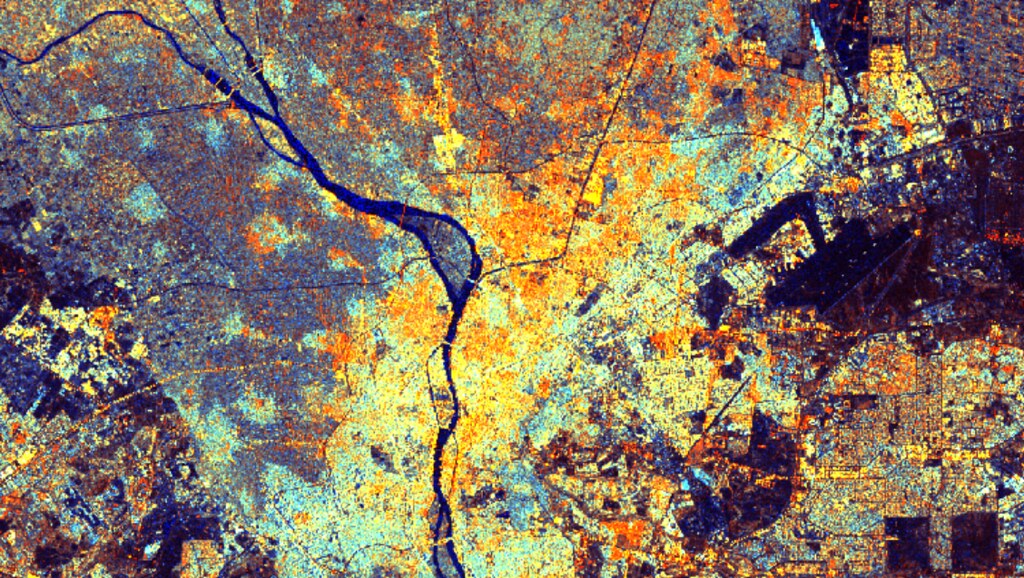Digital Earth Africa
Earth Observation

Transforming Satellite Data into Actionable Insights for Africa’s Future
Earth observation (EO) is the process of collecting data about Earth’s physical, chemical, and biological systems to monitor and assess changes in both natural and manmade environments. Through the use of various instruments such as satellites, floating buoys, and land stations, EO provides invaluable insights into the state of our planet. By leveraging EO data, we can better understand critical issues like climate change, resource management, and environmental sustainability. Using an open data cube (ODC), this raw satellite data is processed into analysis-ready information, making it easier to visualise and understand changes across Africa’s land and water, ultimately supporting informed decision-making across the continent.

What is Earth Observation?
Earth observation (EO) involves collecting data on Earth’s physical, chemical, and biological systems to monitor changes in the environment. Much of this data, available as open-source satellite imagery, is processed into analysis-ready information using an open data cube, making it easier to visualise changes across Africa’s land and water.

What is an Open Data Cube?
The open data cube (ODC) is an open-source solution for accessing, managing and, analysing large quantities of Earth observation data, in particular time-series of satellite images. The initiative is both a community and a technology, with the idea that a community is being developed around this open-source technology to further advance its core capabilities. The purpose of an ODC is to allow ingestion, storage, provision, and analysis of structured geospatial data.
We’re using the ODC concept to produce decision-ready products and services that support decision-makers from all sectors, anywhere in Africa.
Key Features of an Open Data Cube (ODC)
- Monitor and map coastal erosion across Africa.
- Assess the impact of local and regional coastal management based on historical data.
- Model coastal responses to sea-level rise, extreme weather, and human development.
- Support studies on the causes and effects of coastline changes over time.
 English
English  Português
Português  Français
Français  العربية
العربية